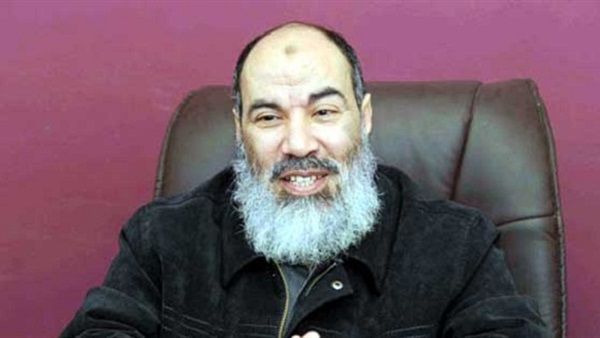Rehabilitation of extremists: Previous success story and future vision for community reintegration

State strategy to turn terrorists into model individuals
The Egyptian state is
facing a number of complicated challenges. How to deal with extremists and
terrorists, who have been detained or have returned from conflict areas, is one
of three major challenges facing the state.

The 1st challenge
The detained
extremists may recruit many young people in jail. They may recruit
criminals behind bars. Imprisoned Al-Qaeda and Daesh elements may also recruit
young people of the Muslim Brotherhood.
The 2nd challenge
The detained terrorists
may also have communication channels with other takfiri organizations abroad as
happened in an attempt to assassinate former president Hosni Mubarak in Addis
Ababa, Ethiopia. The investigations revealed that some leaders of Al-Jama'a
Al-Islamiyya, imprisoned in Egypt, arranged the assassination attempt in
coordination with some elements abroad.
The 3rd challenge
These elements stand out
as what might be labeled as a "time bomb", or a potential hazard. In
case of any security turmoil, these elements may emerge as a seed for more
dangerous groups as happened in Syria, Libya and Iraq.

Parallel conception
These three challenges
drive us to suggest a parallel conception along with toughening punitive
measures. This conception is based on two paths: enhancing the security and
information efficiency to face the takfiris, and adopting a new strategy for
rehabilitation, especially for those returning from conflict areas for
community reintegration in a bid to rein in their potential dangers in the
future.
However, these
rehabilitation attempts require significant development to be effective and
influential. For a rehabilitation and reintegration strategy, the methods used
by takfiris to recruit the youth should be well identified. The terrorist
organizations draw on five methods to recruit the youth.
These recruitment
methods are: injustice, the dream to realize the Islamic caliphate, revenge,
fear and poverty.
Egyptian experiences
The Egyptian state has
gone through violent clashes with terrorists over the last two decades of the
20th century. The local takfiri organizations were Al- Jama'a
Al-Islamiyya and Al-Jihad. Consequently, there was an organizational unity
between Al-Jihad and Afghani-based Al-Qaeda.
A number of deadly
terrorist attacks took place from Assiut Security Directorate operation, in
which 118 conscripts and police officers were killed in 1981 to Luxor operation,
in which 58 tourists were killed in 1997.
The Luxor operation
marked a strategic turning point of the security perspective, resulting in what
was labeled in the media as "intellectual revisions of Al- Jama'a
Al-Islamiyya.
The revisions were under
the supervision of major general Ahmed Raafat, former deputy head of the State
Security Investigation Department. Here we analyze the revisions, which marked
a turning point in the past, to see if it could be used as a mechanism for
dealing with other takfiri organizations.
Non-violence initiative
Al- Jama'a Al-Islamiyya
launched non-violence initiative in July 1997 in a statement by Mohamed Abdel
Alim, one of the organization's second-tier leaders. However, it was not taken
seriously as many experts and authorities doubted it and considered it a sort
of evasion.
Doubts intensified after
the Luxor deadly attack took place on November 17, 1997.
A mediator
Ahmed Raafat, who used
Haj Moustafa Refaat as a pseudonym, drew on the non-violence initiative to open
communication channels with the leaders of Al- Jama'a Al-Islamiyya after he had
persuaded the authorities of reintegration and rehabilitation.
Raafat worked on that path for nearly five years until the revisions saw the light in February 2002 in four books, authored by a numbr of the organization's leaders such as Karam Zohdi, Nageh Ibrahim, Essam Derbala, Assem Abdel Maged, Osama Hafez, Fouad El-Dawaliby and Hamdy Abdel Rahman.

Steps for success
The rehabilitation and reintegration initiative went through five phases to bear fruit as follows:
1. Confidence building: This is the most important phase as it is the starting point for successful talks, especially with militant organizations. Nageh Ibrahim described major general Ahmed Raafat as an excellent man behind the revisions.
2. State persuasion: Raafat relied on door-knocking to persuade the authorities.
3. Negotiation tactics: Raafat and leaders of Al- Jama'a Al-Islamiyya worked on two levels. Al- Jama'a Al-Islamiyya leaders, security officials and experts on Islamic Shariah and jurisprudence. The second level each leader of Al- Jama'a Al-Islamiyya went to talk to other members in prison to persuade them of the revisions.
4. State positive move: The state took a number of moves towards the organization's members in prison. It released many of them and printed the revisions.
5. Community reintegration: This is the most essential phase, which is the key turning point in rehabilitation, ensuring that takfiris wouldn't return to violence. The state worked on the economic, social and financial well-being of the rehabilitated members. For instance, it opened a clinic for Nageh Ibrahim. It employed many of the rehabilitated members in private companies and public authorities.
Could that be repeated? If yes, with whom?
The non-violence initiative may be repeated with takfiris returning from abroad like Daesh for instance, especially with those who are desperate and inactive members. However, the problematic issue emerges when it comes to implanting this approach in dealing with takfiri groups, which are active in Egypt.
Most of these groups have emerged under the auspices of the Muslim Brotherhood such as Hasm, Lewaa Al-Thawra (The Revolution Brigade) and others. Therefore, an approach based on revisions will be difficult for two reasons: the jurisprudent structure of the Muslim Brotherhood is of secondary importance compared to common interests the organization's members, and "the living approach" adopted by the Muslim Brotherhood's members from family up to the organization's hierarchy.
Therefore, dealing with the Muslim Brotherhood's organization would require a new approach based on creating a parallel network of interests attracting the organization's members, on one hand, and introducing a different living approach for the detainees on the other hand.
Therefore, the Muslim Brotherhood detainees should be separated and located together to create a new living style for them.
The so-called Muslim Brotherhood revisions, which emerged in 2017 and early 2018, have been inaccurate for two reasons: the media cited individual cases that cannot be sort of rehabilitation and reintegration, and there's confusion between reconciliation and the concept of rehabilitation and reintegration.
Conclusion
The Egyptian state introduced in the beginning of the millennium a model of rehabilitation and community reintegration for many of takfiris starting by members of Al- Jama'a Al-Islamiyya and Al-Jihad, in addition to others returning from Chechnya and Albania.
The initiative may be a key approach to set up a new strategy for the rehabilitation and reintegration of takfiris, especially those returning from Syria and Iraq.





